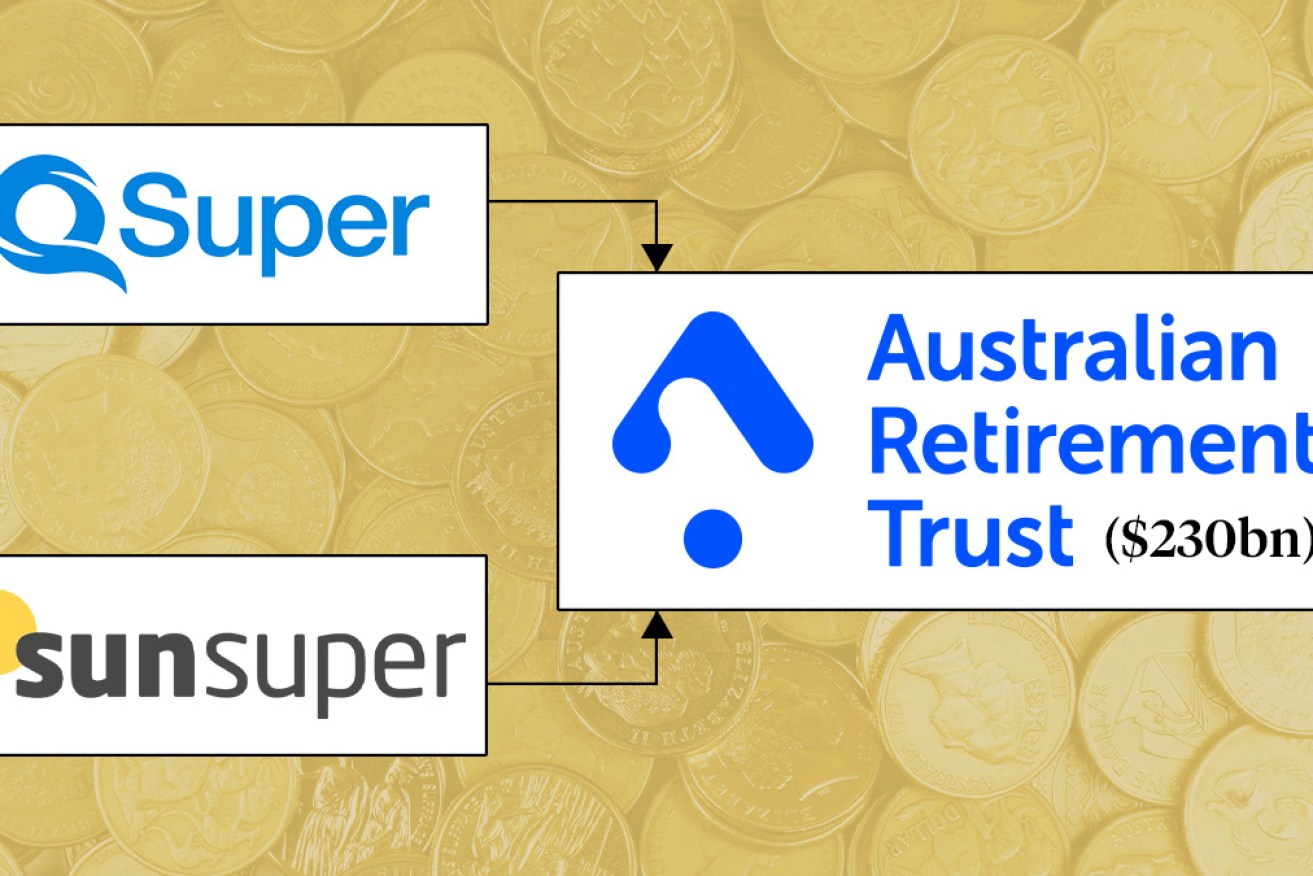What superannuation members need to know about fund mergers


Mergers are creating giant new superannuation funds.
Regulators have been putting pressure on superannuation funds to find merger partners in an attempt to boost efficiency and end poor practices uncovered by the Hayne banking royal commission.
But members need to look at the fine print to see whether they’ll actually benefit from the headline-grabbing deals under way at the moment.
Some of them are eye watering, with the latest involving Queensland’s QSuper and Sunsuper.
The funds will come together to create a $230 billion fund that’s just behind No.1 AustralianSuper’s $244 billion retirement fund.
Another huge fund was created when three state government funds from New South Wales, Victoria and Western Australia came together to create the $130 billion Aware Super.
But while there is power in size, culturally not all superannuation funds appear to fit together.
One glaring example where culture could be an issue is the soon-to-be completed merger between building industry fund Cbus and the media sector’s Media Super.
In recognition of those cultural differences, the funds will merge their investment pools but retain separate names and member management arrangements.
Given your super is probably your largest or second largest asset, you want to have a good idea about what is happening to it if you get a letter saying it’s going to merge.
Things to check
Lawyers Johnson Winter & Slattery have identified a few issues you need to find out about.
“Who will be on the board of the merged fund and who will be its chair,” the firm advised.
Board decisions can bring mergers unstuck.
Famously Catholic Super and Australian Catholic Superannuation, two groups you might have thought had much in common, were unable to complete a merger in 2017 when they couldn’t agree on the board structure.
Another issue the firm identified is whether existing super policies will be transferred to the merged entity.
“The first thing you need to determine is will there be any changes to the underlying investment itself,” said Prashant Nagarajan, co-founder of financial advisory firm Finnacle.
“You could be in a default option in fund A. If you are moving to Fund B after the merger, then you need to verify if there is going to be any change in that.”
To determine that you need to look beyond the labels to what a fund actually does.
For example, your fund may be classed as balanced and have 60 or 70 per cent growth assets, and the new fund you are going to could have the same nominal allocation.
But in actual fact it might have a higher or lower allocation to growth assets.
Insurance cover could change
Another thing to check is insurance.
You may have a certain level of insurance that meets your needs in areas like life cover, disability or income protection.
But you need to check that your cover level will be transferred over to the new fund at the same level.
“You will be able to add or subtract from those things and costs are highly competitive because there are only a few providers of group insurance,” said Wayne Leggett, a planner with Paramount Financial Solutions.
That means you should be able to get the same level of cover for a similar price, but make sure the new fund has the level of cover you want if you change.
Beyond insurance, there are administration and investment charges your new fund may levy.
“Check that your new fund has fees that are reasonable compared to the market,” Mr Leggett said.
That means do some homework, see what fees your new fund will levy, see how that compares with your current fund, then check how both funds’ fees compare with high-performing players in the market.
Finder.com.au is one place you can find the necessary information. It will also show you fund performance so you can also compare your new fund against the market for returns.
And remember when you move to a new fund, you need to keep an eye on things over time.
“What you usually find is that in most cases they try to retain everything as it was in the short term,” Mr Nagarajan said.
“But the devil’s in the detail about what they will do over the next year or so.”
For members, says Xavier O’Halloran, director of Super Consumers Australia, mergers have tended to be good.
“Generally there has been an average decrease in fees, which is what we’d expect to see as the mergers were supposed to produce greater efficiencies in the short term,” he said.
However SCA’s review is now two years old and it is in the process of reviewing the effects of mergers in recent times, which will give another view on the results.
The New Daily is owned by Industry Super Holdings








